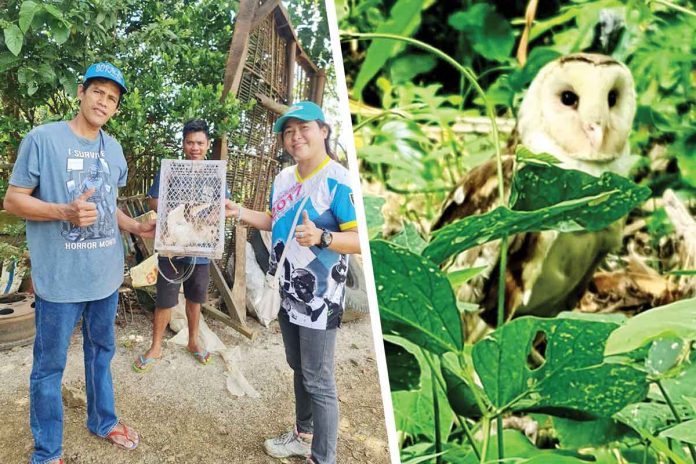
CAPIZ – A displaced eastern grass owl was rescued by a concerned citizen in Maayon town.
According to the Capiz Provincial Environment and Natural Resources Office (CaPENRO), barangay resident Toto Dariagan found a weak grass owl after the flooding caused by Tropical Depression “Agaton” two weeks ago.
The extreme flooding in Capiz on April 12 displaced not only people but animals, too.
Many animals died because their habitats were destroyed, according to the CaPENRO.
Dariagan kept the owl for days, feeding it and giving it water until it regained strength.
He then informed CaPENRO and sought their assistance to assess the condition of the owl for release.
It was eventually turned over to CaPENRO and was released back to the wild on April 29 in Maayon./PN
The eastern grass owl (Tyto longimembris), also known as Chinese grass owl or Australian grass owl, feed predominantly on small rodents.
It is a medium-sized owl with dark brown or tan upper parts with pale spots. They have black and tan bars on the wings and a very pale beak, feathered legs, and dark brown eyes.
Like all Tyto owls, it has a heart-shaped facial disk with brown buff and a white bordering.
This owl prefers tall grasslands and swamps. Roost areas consist of flattened vegetation within systems of “tunnel” through the swamp vegetation. Nesting is in similar situations.
Eastern grass owls are considered “least concern” globally, primarily because of their wide distribution./PN






